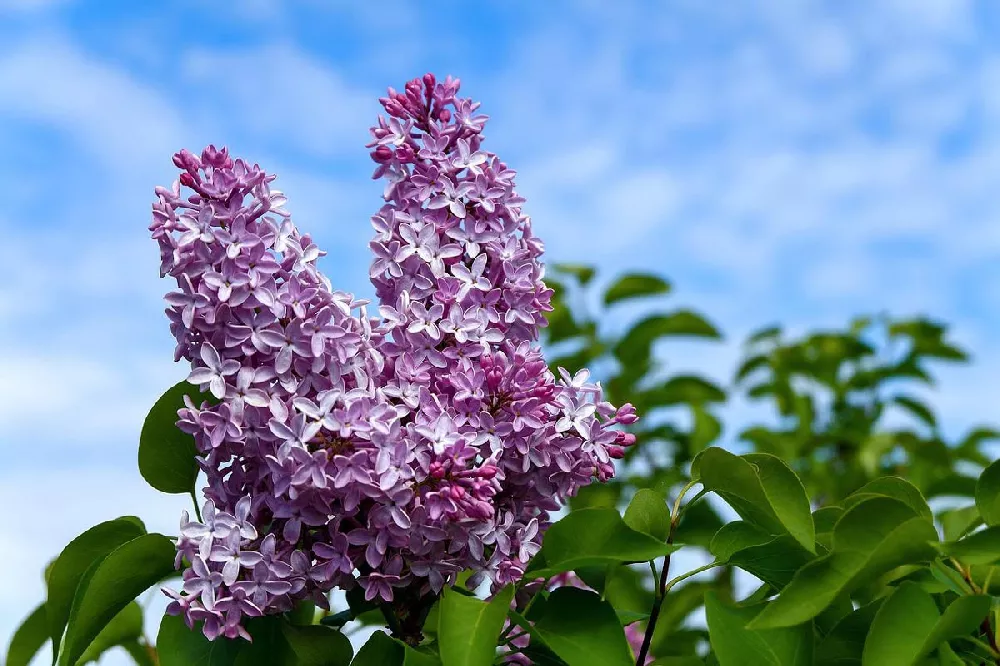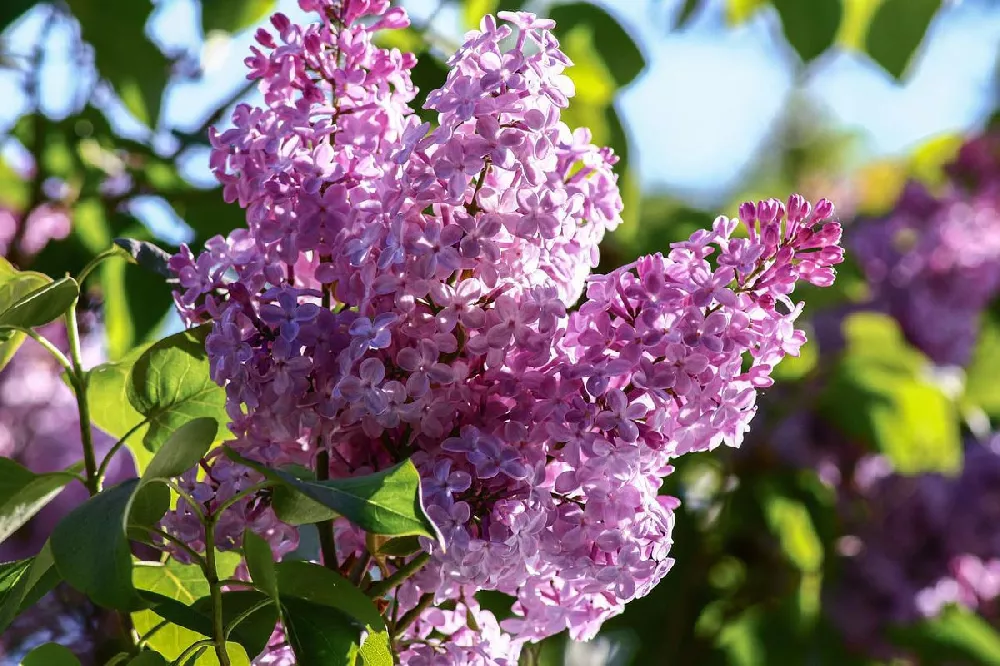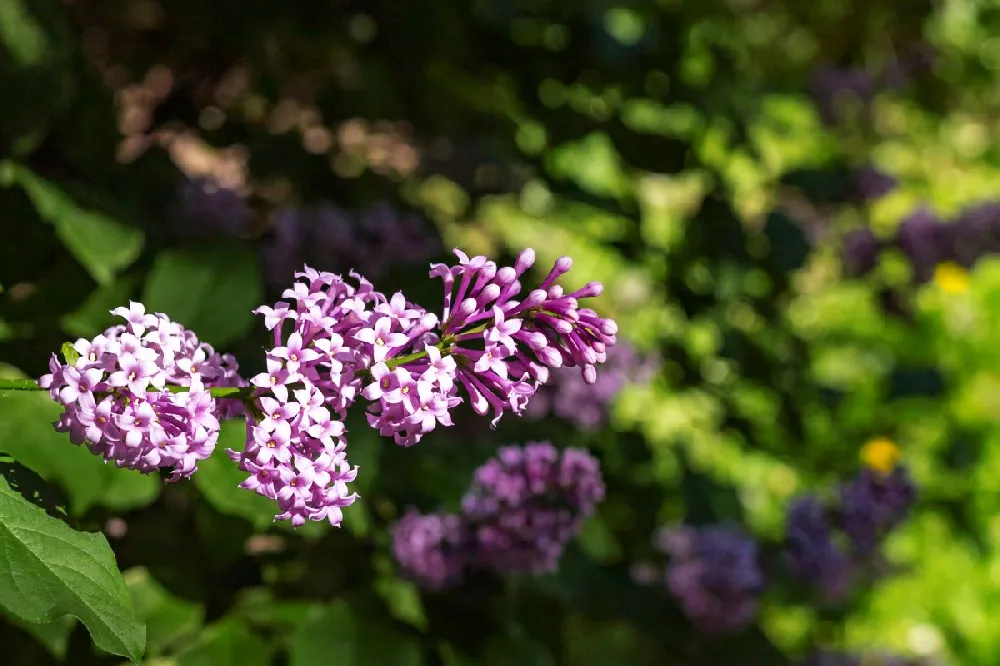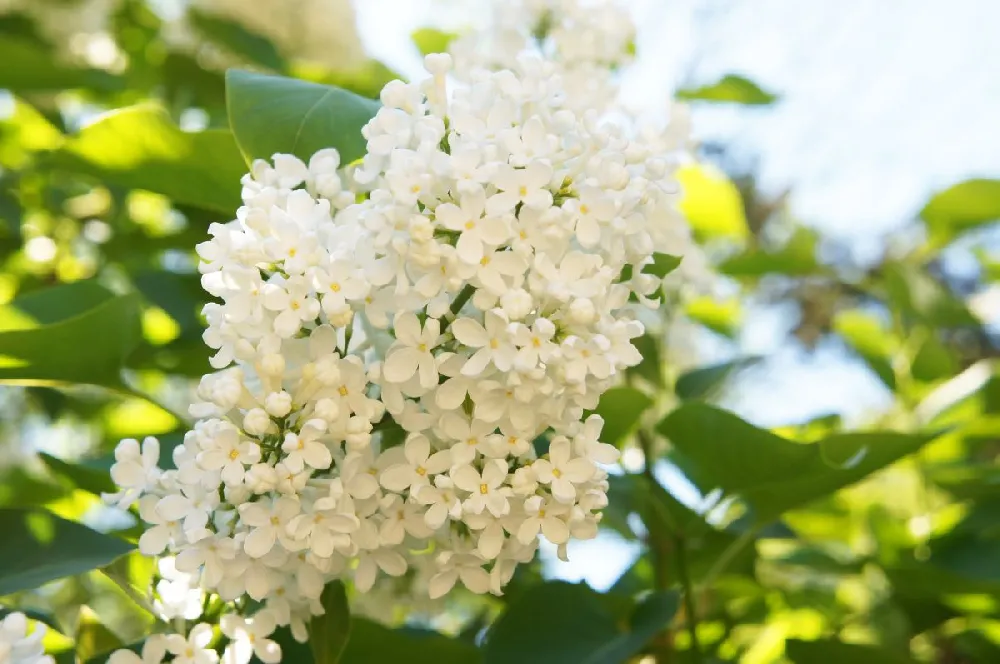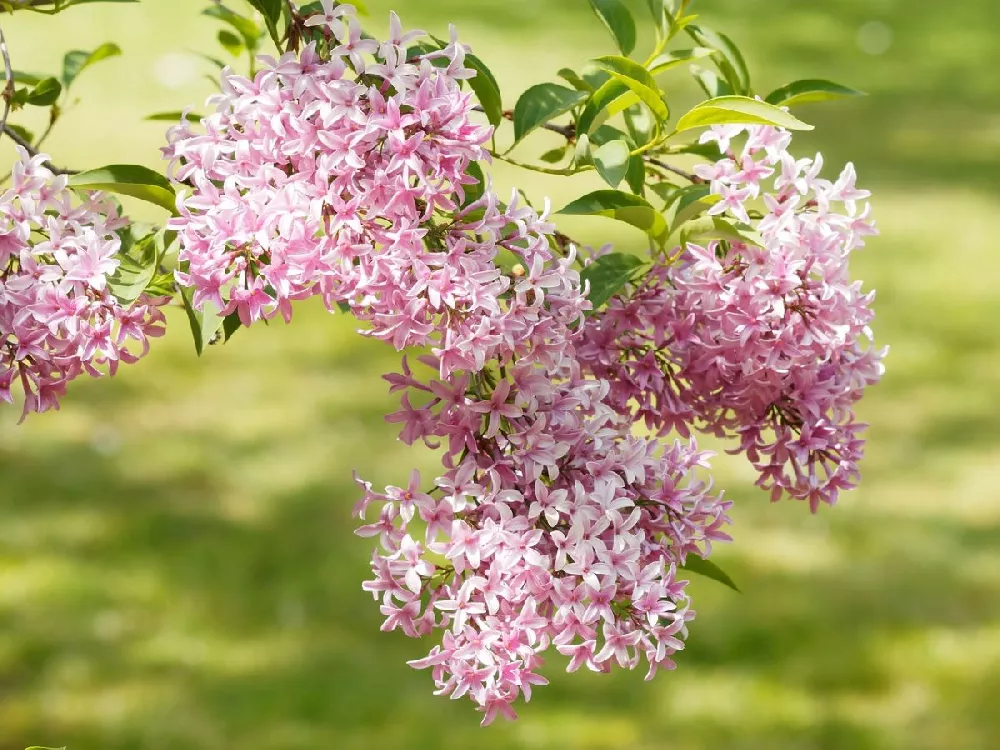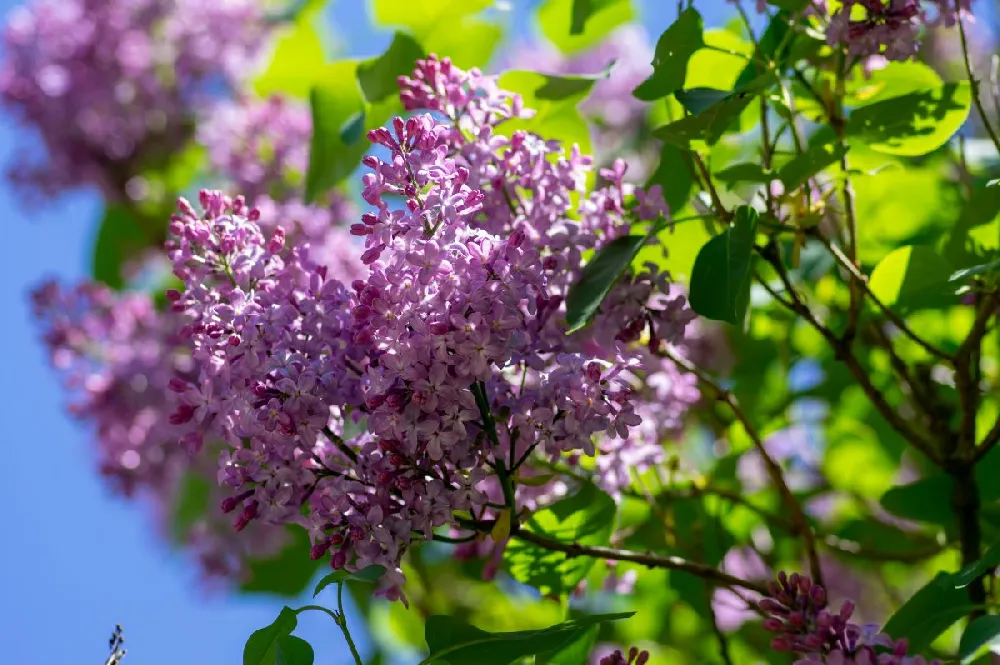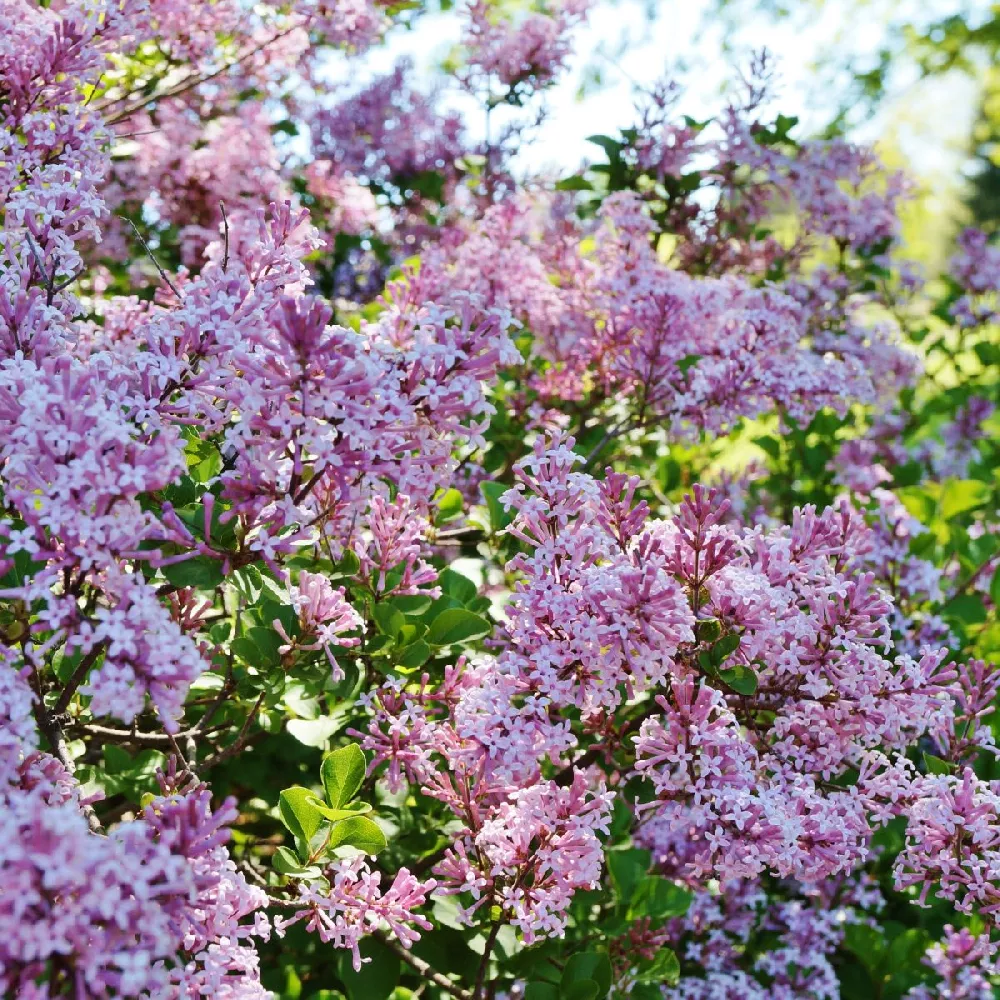Old Fashioned Lilac for Sale - Buying & Growing Guide
- Ships in 1-2 days
- 1-Year Warranty Eligible
- Pots or accessories are not included unless specified in the product options.
Shipping Details:
Once your order is shipped, you’ll receive an email with a tracking number and estimated delivery date. Most orders ship immediately, but some items are seasonal and may only ship in spring or fall. These products are noted on the website.
The old-fashioned lilac is one of few plants with flowers that are perhaps as well-known for their appearance as for their scent. Both the sight and smell of the old-fashioned lilac blooms are pleasant and memorable. This species, Syringa vulgaris, also has a lovely set of heart-shaped leaves with a smooth texture. Old-fashioned lilac proves to be an excellent tree for the large plant massings that can give your favorite garden spaces a greater sense of structure and privacy. Learn about a few benefits offered by the old-fashioned lilac:
- Deeply colored and incredibly fragrant springtime flowers.
- Small heart-shaped leaves make a perfect backdrop for the flowers.
- Great for massing and filling planting areas.
Plant Care
Sunlight

Full sunlight conditions are ideal for this plant.
Watering
Water this plant deeply about once every other week but be sure to avoid overwatering.
Fertilizing

Fertilize once per year with a blend that is higher in phosphorus and potassium.
Planting and Care
Planting instructions
Old-fashioned lilacs survive in hardiness zones 3-7 and enjoy an area that receives full sunlight in all parts of that range. The root systems of these plants will adapt best to soils that have great drainage, an acidity level close to neutral, and an abundance of organic material. Once you find an area with those conditions, create a planting hole as deep as the root ball is tall and at least twice as wide. Adding peat moss to your planting hole often helps this tree get off to a great start.
Watering and nutrients
Like most newly planted woody shrubs, your old-fashioned lilac will need consistent soil moisture while it attempts to settle into a new growing location. After your plant is established, water it throughout the growing season enough to allow no more than the top inch of soil to dry out. Give your old-fashioned lilac fertilizer about once per year in the spring. Products with more phosphorus are often best as they tend to encourage better flowering.
Pollination
The flowers of an old-fashioned lilac will attract many pollinators, including honeybees and butterflies, which will only make your garden more charming overall. However, this plant is versatile, also relying on wind and rain to carry its pollen from one flower to another. Upon pollination, the old-fashioned lilac produces small green non-toxic fruits that are rarely grown for consumption. Pollination should not be a major concern as you raise this plant.
Pruning
Pruning for old-fashioned lilacs should take place as soon as the flowers fade in the spring. Be sure to remove each spent flower, as this will prompt your old-fashioned lilac to produce more flowers in future seasons. Your goals should also include thinning the inner canopy of this tree to promote better air circulation and lower the risk of moisture-related diseases that can arise. Beyond that, use your pruning to remove any damaged or dead limbs from your plant.
Pests, diseases, and animals
One of the most significant downsides to growing an old-fashioned lilac is that these plants are vulnerable to many diseases. Powdery mildew is one of the most prevalent concerns for an old-fashioned lilac, but leaf spots, ring spots, and different forms of blight can present issues too. The pests that may infect your shrub include hornets, caterpillars, leaf miners, scale insects, borers, and a wide range of other insects. Considering the old-fashioned lilac faces so many threats, remain vigilant the entire time you grow it.
Achieving maximum results
Part of the reason that lilacs grow best in full sunlight is that they can be somewhat prone to frost damage. More sun keeps your plant warmer in early spring to prevent this damage, and some wind protection can help too. On the positive side, the old-fashioned lilac is incredibly easy to propagate. Just cut one of the shoots that grow from the base, including some roots, then plant that shoot elsewhere in your garden.
FAQs
How large do old-fashioned lilacs grow?
Old-fashioned lilacs are large shrubs that typically grow to be about 12 to 15 feet tall at maturity. These shrubs also produce a considerable spread of about 8 to 12 feet wide. This substantial size makes the old-fashioned lilac larger than many other flowering shrubs and allows it to work well in hedges and large plant massings. Use this plant any time you want to fill space in your garden beds with something that will add more than background color.
Why are old-fashioned lilacs so popular?
The popularity of the old-fashioned lilac is partly related to its astounding ornamental features — mainly its flowers, and partly due to the sense of nostalgia that many people associate with this plant. This old-fashioned lilac blooms in the spring, often around significant celebrations and life events such as graduations and Mother's Day. As a result, many have come to connect the strong smell of lilac flowers with these happy occasions.
What do old-fashioned lilac flowers look like?
Each flower on an old-fashioned lilac is quite small, but these flowers appear in such large numbers that you cannot miss them. The plant blooms with large panicles (or flower clusters) that are somewhat triangular and spike-like and often over half a foot long. These flowers have a consistent, dark color that makes them stand out in the landscape and allows them to look fantastic in cut flower arrangements.
Compare Similar Products
You can't add more Product Name - Product size to the cart.
OK